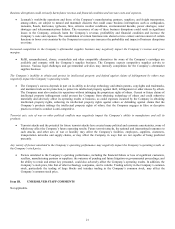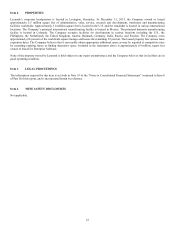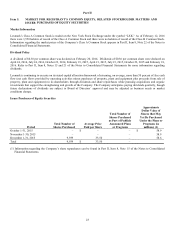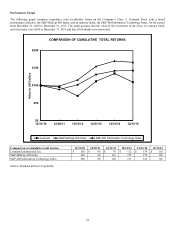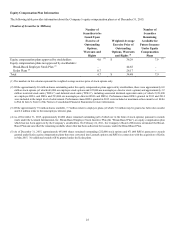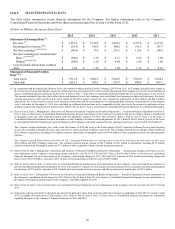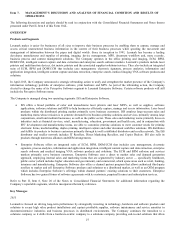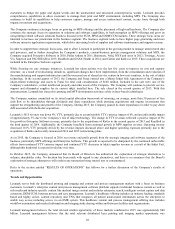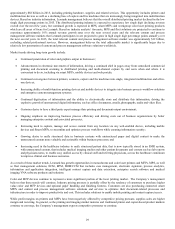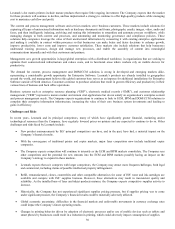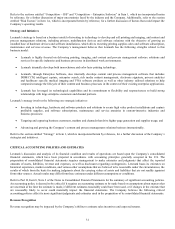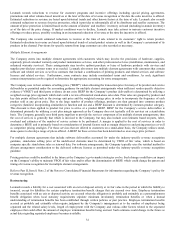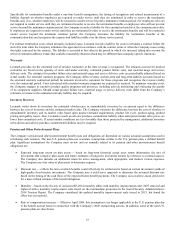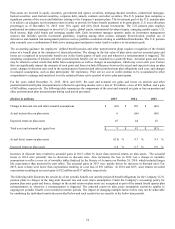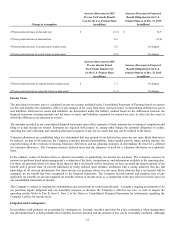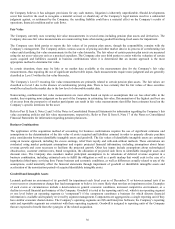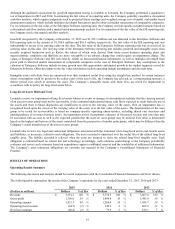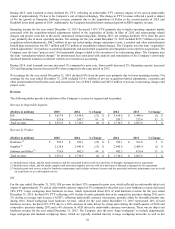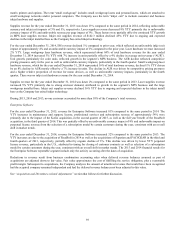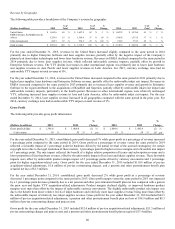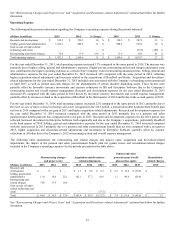Lexmark 2015 Annual Report Download - page 35
Download and view the complete annual report
Please find page 35 of the 2015 Lexmark annual report below. You can navigate through the pages in the report by either clicking on the pages listed below, or by using the keyword search tool below to find specific information within the annual report.31
Refer to the sections entitled “Competition – ISS” and “Competition – Enterprise Software” in Item 1, which are incorporated herein
by reference, for a further discussion of major uncertainties faced by the industry and the Company. Additionally, refer to the section
entitled “Risk Factors” in Item 1A, which is incorporated herein by reference, for a further discussion of factors that could impact the
Company’s operating results.
Strategy and Initiatives
Lexmark’s strategy is based on a business model of investing in technology to develop and sell printing and imaging, and content and
process management solutions, including printers, multifunction devices and software solutions with the objective of growing an
installed base of hardware devices and software installations, which drives recurring printing supplies sales and software subscription,
maintenance and services revenue. The Company’s management believes that Lexmark has the following strengths related to this
business model:
Lexmark is highly focused on delivering printing, imaging, and content and process management software solutions and
services for specific industries and business processes in distributed work environments.
Lexmark internally develops both monochrome and color laser printing technology.
Lexmark, through Enterprise Software, also internally develops content and process management software that includes
DOM/CCM, intelligent capture, enterprise search, rich media content management, electronic signature, process analytics
and healthcare specific medical imaging and VNA software products as well as other industry tailored solutions to help
companies manage the lifecycle of their content and business processes in the context of their existing enterprise applications.
Lexmark has leveraged its technological capabilities and its commitment to flexibility and responsiveness to build strong
relationships with large enterprise customers and channel partners.
Lexmark’s strategy involves the following core strategic initiatives:
Investing in technology, hardware and software products and solutions to secure high value product installations and capture
profitable supplies, and software subscriptions, maintenance and service annuities in content-intensive industries and
business processes;
Targeting and capturing business customers, markets and channels that drive higher page generation and supplies usage; and
Advancing and growing the Company’s content and process management solutions business internationally.
Refer to the section entitled “Strategy” in Item 1, which is incorporated herein by reference, for a further discussion of the Company’s
strategies and initiatives.
CRITICAL ACCOUNTING POLICIES AND ESTIMATES
Lexmark’s discussion and analysis of its financial condition and results of operations are based upon the Company’s consolidated
financial statements, which have been prepared in accordance with accounting principles generally accepted in the U.S. The
preparation of consolidated financial statements requires management to make estimates and judgments that affect the reported
amounts of assets, liabilities, revenue and expenses, as well as disclosures regarding contingencies. Lexmark bases its estimates on
historical experience, market conditions, and various other assumptions that are believed to be reasonable under the circumstances, the
results of which form the basis for making judgments about the carrying values of assets and liabilities that are not readily apparent
from other sources. Actual results may differ from these estimates under different assumptions or conditions.
Refer to Part II, Item 8, Note 2 of the Notes to Consolidated Financial Statements for the summary of significant accounting policies.
An accounting policy is deemed to be critical if it requires an accounting estimate to be made based on assumptions about matters that
are uncertain at the time the estimate is made, if different estimates reasonably could have been used, or if changes in the estimate that
are reasonably likely to occur could materially impact the financial statements. The Company believes the following critical
accounting policies affect its more significant judgments and estimates used in the preparation of its consolidated financial statements.
Revenue Recognition
Revenue recognition may be impacted by the Company’s ability to estimate sales incentives and expected returns.


